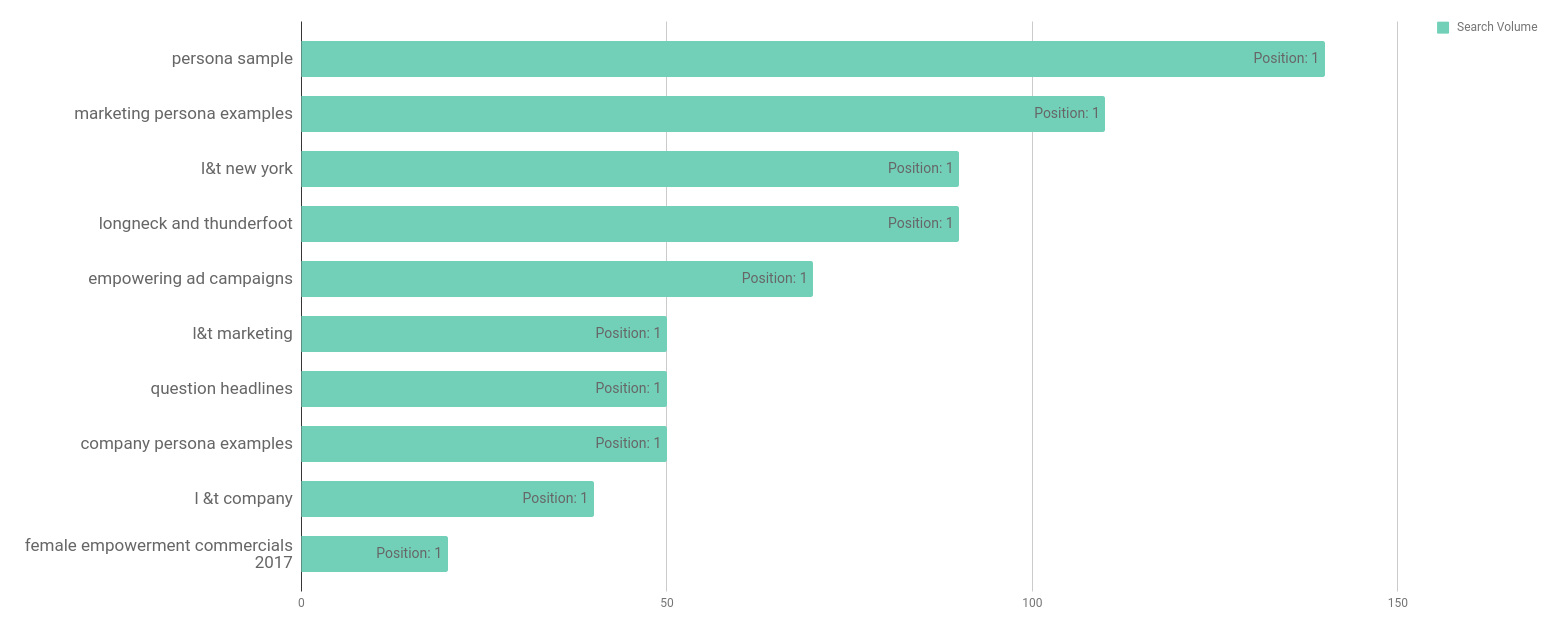What is Digital Brand Authority and How Do You Measure It?
You can measure your digital brand authority by taking stock of the relevant industry keywords for which your site ranks, your brand’s coverage in authoritative publications, and the frequency with which you share big ideas.
Generally speaking, brand authority implies the extent to which people know of, believe in, and trust the ideas of a particular organization. However, as a concept, it is largely subjective and therefore difficult to define and measure.
We’ve attempted to put a definitive number on this concept with our take on “Digital Brand Authority.” The data used for this measurement comes from three places: your brand’s keyword rankings for industry terms, the placements or coverage you’ve secured in industry publications, and the cadence at which your brand shares big ideas.
Industry-Specific Keyword Rankings
Here’s what keyword rankings can’t tell you: how customers actually feel about your brand. Unless you ask them directly, your customer’s private perception of your brand is a black box. However, because Google’s rankings are determined by user behavior, they are influenced significantly by real user perceptions.
When a user clicks on a Google results link to a particular site, this sends a tiny signal to Google to improve the rankings of that site across the search engine. Thus, Google search rankings are a reflection of the extent to which customers trust your brand — and the extent to which they trust your brand’s knowledge with respect to a particular topic.
Here’s some example data from landt.co. As you can see, among other things, we rank well for keywords relating to marketing personas, persona samples etc. This is to say that Google (and by extension, consumers) perceives our authority in this area.

Media Coverage and Placements
Media coverage is similar to your keyword rankings in that it is a reflection of media organizations’ trust and esteem for your brand. Meanwhile, we can consider it a proxy for the reach of your ideas more generally, inasmuch as placements in reputable publications will allow you to influence and build trust among a greater number of people.
Often, you’ll already know when a media organization has written about you, because you may have had a hand in securing the mention. This is not always the case, however. To get a feel for the level of coverage you’re getting, you can use an inbound link checker. My favorite tool, SEM Rush, has one built in.

Big, Compelling Ideas
It is very difficult to measure the breadth and depth of a company’s vision. At the same time, sharing big ideas is an excellent way to build authority: 53% of businesses evaluate a company’s thought leadership status when deciding whether to develop a partnership.
As such, the frequency at which a company formulates and publishes big thought pieces, white papers, and even digital stories can be used as a proxy for its authority as an organization. Tracking this cadence is an indicator of brand authority, if not the indicator. Obviously, the only way to tell whether a piece of content marketing collateral hits the mark is to ask the reader, but getting the ideas out there (and monitoring their reception) is the first step.
Assembling the Numbers
Because these numbers — i.e. a brand’s keyword rankings versus its white paper publishing cadence — mean different things, it doesn’t really make sense to aggregate them into a single numerical ranking. However, taken together, these numbers allow you to compare your brand’s performance to your competitors. For example:
Brand 1: Rankings: 235 // Media Coverage: 4 // Big Idea Cadence: 1 / month
Brand 2: Rankings: 30 // Media Coverage: 12 // Big Idea Cadence: 1 / year
With these metrics in hand, companies can gain a better understanding of how successfully they are projecting authority online and pinpoint areas for improvement. Once you have these insights, all that’s left is to build a strategy to act upon them.
Related Insights
We’re looking forward to working with you, too.
Start conquering the digital terrain today.





